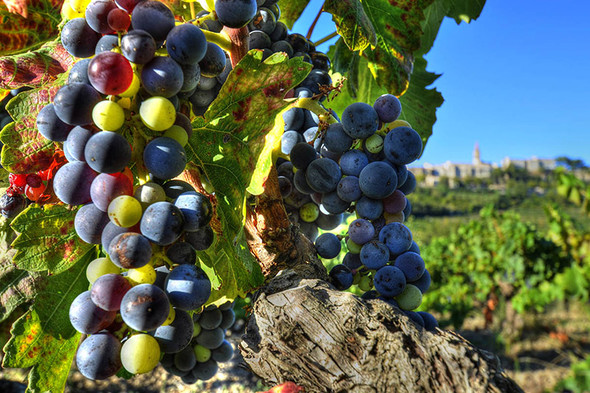As he walked past the mule, he spat, but said nothing else. Then, his eyes to the ground, he teetered on.
- No, that was not very friendly either, my father said.
- He’s not always like this, said the peasant. He’s angry with me, because we’re brothers.
/Marcel Pagnol: Father’s Glory/
Provence is the world of starlight, light, the film festival, luxury yachts the size of houses and Russian guards. The place where the entire Hungarian state debt rolls by in front of us within a quarter of an hour if we are misguided enough to drink iced coffee for three times the normal price on the promenade. It does have another face too, the film star’s, the mansion with tennis court and swimming pool version, where peasant girls resembling top models stamp the local grapes in the cellar, while you fall hopelessly in love with them.
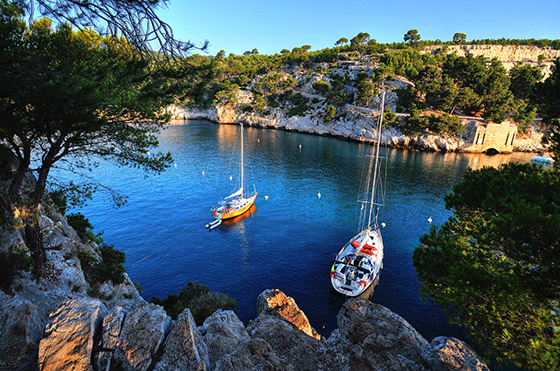
These images are mostly American interpretations of the region. However, there is some countryside behind the coastal strip – like a new skin beneath one that’s been shed – which is just like that which Marcel Pagnol saw. Villages where the farmers only learn French in school, where the neighbouring village is nearer by donkey than by car I think this is as much a myth as the deluxe view of the coast. All schools teach a second language and everyone has a car, where hapless tourists can lose themselves in vast karst fields. This timeless Provence is like a memorial, real yet unreal, fossilised like ancient snail shells which are washed from the sides of hills by the water after a storm. Perhaps the latter is the real face of the region, where the hot air vibrates and oscillates on the hillside, as people retreat to the shade of fig trees, sweet aroma fills the air whilst wicker-wrapped more likely to be local pottery jugs pour rosé into water glasses. Let’s hope that the coastal hustle and bustle and noise of mobile telephones does not penetrate as far as here and this heavenly state may long continue to be preserved as a refuge for those who want to forget or those who wish to be forgotten. This may be the Marie Antoinette syndrome of the wealthy tourist recreating the bucolic rustic lifestyle – in reality the Provence wine grower, olive oil producer or lavender farmer (there are few other farmers), is pretty advanced and high tech. Shepherds tend to be toothless, non-communicative and real peasants.
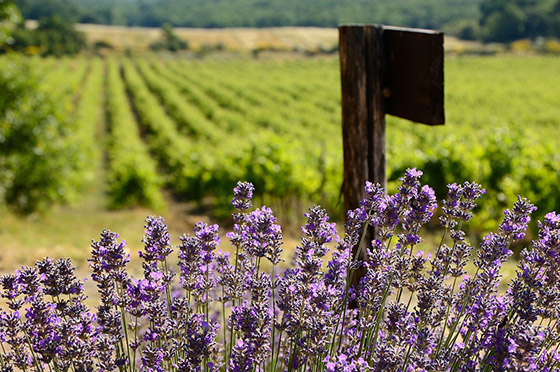
AOC - IGP or what may end up in our glass if we drink Brad Pitt’s wine?
We’re not saying it’s impossible to navigate this, which would also be impossible if we were talking about simple geographical borders, but if you imagine the AOC system and the underlying IGP as a labyrinth, Ariadne’s entire thread would not suffice either … Let’s take a good look at the whole thing in turn.
The western boundary of the Provence wine region is the Rhône; to the north, first of all the border is formed by the line of the village of Tarascon and then for a long time the river Durance. Later, the boundary moves away from the river and becomes blurred in the mountains, the next certain point being the town of Cannes at its eastern reaches. The river Var is the western limit of Provence. There are just two tiny exceptions further east, the Bellet AOC, lying to the north of Nice, on the far side of the river Var (it only became French in 1860) and also there, in the valley of the river Var, the tiny area of Côtes de Provence AOC around Villars-sur-Var.
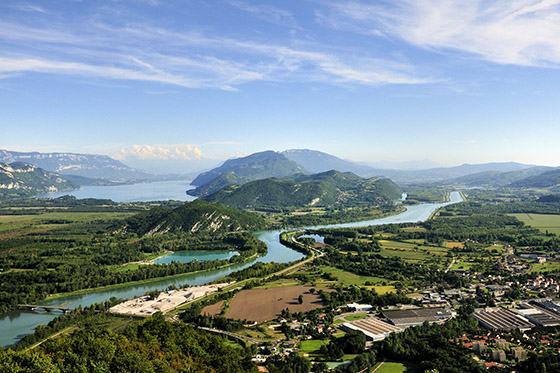
Let’s make a start with the less important IGP areas where the regulations are less important than in the AOC parts. The following lie within Provence’s territory: Bouches-du-Rhône, Terre de Camargue, Alpilles, Var, Maures, Mont-Caume, Coteaux du Verdon, Sainte-Baume, Argens and Alpes-Maritimes. It’s important to note that one tiny part of the Alpes-de-Haute-Provence IGP does not fall within the Provence wine region. Thus, it gets its name for a different reason (primarily geographical), which can easily mislead, and also confuse, consumers.
Then there are the Provence AOCs.
Coteaux d’Aix-en-Provence AOC (since 1985)
The 4100-hectare area produces 200,000 hectolitres of wine every year, of which 70% is rosé. Local regulations allow 20% of white wine to be added in rosé production. The main black grape varieties are Grenache, Cinsaut, Counoise, Mourvèdre and Syrah. Although Cabernet Sauvignon is a secondary variety, it is an important part of the reds and rosés from this appellation. The local rosé is generally consumed young by the French and is mainly characterised by floral and fruity notes.
Les Baux de Provence AOC (since 1995)
Totalling 325 hectares, 30% of its annual 10,000 hectolitre production is rosé. According to the regulations, 60% of the wine must be comprised of two of the following two varieties: Cinsaut, Grenache Noir and Syrah. In addition, Cabernet Sauvignon (maximum 20%), Carignan, Counoise and Mourvèdre (maximum 31%), as well as 10% white wine, are permitted. These rosés don’t rack up two years’ bottle maturation either…
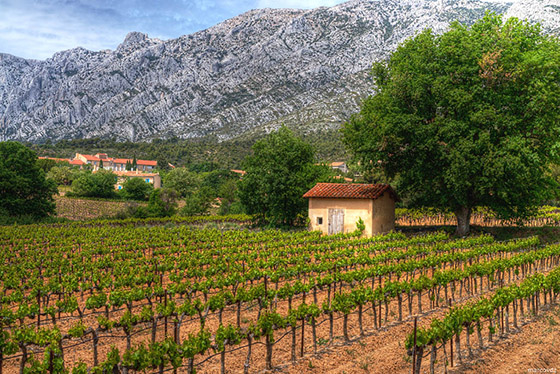
Palette AOC (since 1948)
Forty-three, yes 43, hectares and three estates! 1,600 hectolitres annually, of which twenty percent is rosé. The regulation is complicated; the combined share of the following varieties much be at least 50%, but may not exceed 80%, whilst one of the participants (Mourvèdre) must be at least 10%: Cinsaut, Grenache Noire and Mourvèdre. In addition, Brun Fourca, Cabernet Sauvignan, Carignan, Castet, Durif, Muscat à Petit Grains, Muscat de Hambourg, Petit Brun, Syrah, Téoulier, Terret Gris and Tibouren may also be used, as well as 15% white wine. Furmint is also allowed as it had already been planted when the appellation was created!. Rosés from here may be aged for up to three years in bottle.
Cassis AOC (since 1936)
204 hectares, 4,700 hectolitres production of which 25% is rosé. Minimum 70% Cinsaut, Grenache Noire and Mourvèdre with a maximum of 5% Barbaroux, Carignan Noire or Terret Noir, and in addition to this (known locally as Doucilon Blanc), Clairette Blanche, Marsanne, Pascal Blanc, Sauvignon Blanc and Ugni Blanc are permitted, the latter however a maximum of 20%. These rosés are at their most attractive when young!
Bandol AOC (since 1941)
1,500 hectares, producing 55,000 hectolitres annually, with 35,000 hectolitres of this rosé most of which is produced by Domaine Ott and the local co-operatives. A minimum of 20% and maximum of 95% of Mourvèdre is mandatory; Grenache Noir and Cinsaut, as well as Bourboulenc, Carignan, Clairette Blanche, Syrah and Ugni Blanc are also permitted (up to 20% together and a maximum of 10% per variety). These rosés reach their peak after three to five years in bottle!
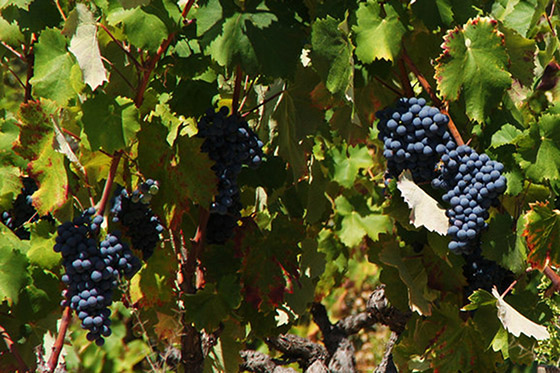
Coteaux Varois en Provence AOC (since 1993)
2,560 hectares, 117,500 hectolitres annually, of which 85% is rosé. It must contain at least 80% of two of the following varieties and neither may exceed 90%: Cinsaut, Grenache Noir, Mourvèdre and Syrah. The following varieties are also permitted in the AOC: Cabernet Sauvignon, Carignan and Tibouren, as well as any of the white varieties permitted in the AOC (Clairette Blanche, Grenache Blanc, Semillon, Ugni Blanc and Vermentino). This is the home of rosés to be consumed young; they should be drunk before the following vintage hits the shelves.
Côtes de Provence AOC (since 1977)
20,000 hectares, 950,000 hectolitres, of which 89% is rosé! It’s also important to know that there are three geographically limited areas within the AOC, which are smaller than the original AOC, with slightly different regulations, but whose producers may state the following names on the label instead of Côtes de Provence: Sainte Victoire, Fréjus La Londe and, since 2015 Pierrefeu. In their cases, the wine still originates from the Côtes de Provence AOC, simply the regulations differ. Well, let’s take a look at the basic regulation, where 70% of the wine must be made up of two of the following varieties, such that no one variety exceeds 90%: Cinsaut, Grenache Noir, Mourvèdre, Syrah and Tibouren. Cabernet Sauvignon and Carignan are also permitted. The following varieties may not exceed more than 10% in total: Clairette Blanche, Semillon and Ugni Blanc, and interestingly, the following varieties together may not comprise more than 20%: Clairette Blanche, Semillion, Ugni Blanc. White wines are permitted to be 100% Vermentino/Rolle. Two more varieties are also permitted (Barbaroux and Calitor), but only if the wine stems from vines planted before 31 July 1994. White wines now age longer than that.
Appellations de Terroir
Sainte Victoire: The wine must contain a minimum of 80% of two of the following varieties, such that neither of them exceeds the 80%: Cinsaut, Grenache Noir and Syrah. Moreover, the latter two varieties must make up a minimum of 50%. Cabernet Sauvignon is also permitted. There following varieties may total no more than 10%: Clairette Blanche, Semillon and Ugni Blanc, and interestingly, the total of the following varieties may be no more than 20%: Clairette Blanche, Semillon, Ugni Blanc and Vermentino. The appellation only applies to red and rosé wine. The limestone soil gives an attractive fresh acidity to these wines.
Fréjus: The wine must contain a minimum of 80% in total of two of the following varieties, such that neither exceeds 60%: Grenache Noir, Mourvèdre, Syrah and Tibouren. There must be 20% of the latter. Cinsaut is also allowed. The appellation only applies to red and rosé wines. The volcanic soil of the Frejus region gives a firm mineral structure. The red wines cn be very closed when young and age well.
La Londe: The wine must contain a minimum of 80% in total of two of the following varieties, such that neither exceeds 60%: Grenache and Cinsaut. Carignan, Mourvèdre, Syrah and Tibouren are also permitted varieties. The total of the following varieties may not exceed 10%, and interestingly the following varieties may not exceed 20% in total: Clairette Blanche, Semillion, Ugni Blanc and Vermentino. The appellation only applies to red and rosé wine but permission has been sought to include white wine. Proximity to the sea gives a salty minerality balanced by very ripe fruit.
Pierrefeu: Red wine must contain a minimum of 80% of Grenache, Mourvedre or Syrah. Cabernet Sauvignon and Carignan are also permitted. Rose must contain Cinsault, Grenach or Syrah. Mourvedre. Is also allowed Tiburen. No more than 20% Rolle, Clairette, Semmillon or Ugni Blanc can be added. The appellation only applies to red and rosé. The wines have a stoney minerality and ripe fruit.
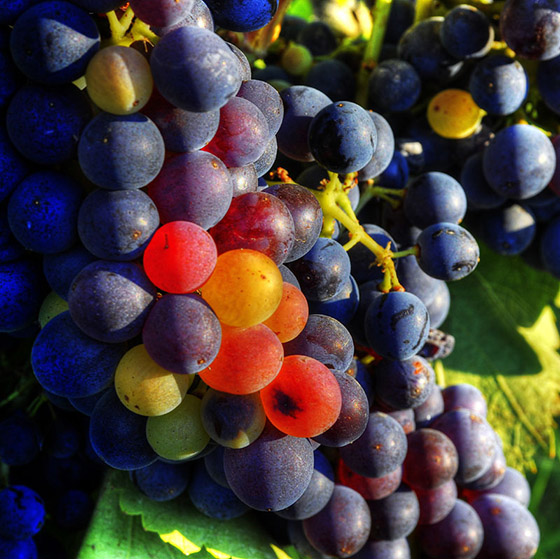
Bellet AOC (since 1941)
As little as 55 hectares, producing 800 hectolitres annually, of which 23% is rosé. The main varieties (minimum 60%) are Braquet and Folle Noir. and Grenache Noir . White varieties are largely Vermentin with some Chardonnay and Clairette. Bourboulenc and Ugni Blanc are permitted. Additional permitted varieties (a total of 5% may not be exceeded) are Bourboulenc, (Blanqueiron, Mayorquin no longer exist), Ugni Blanc (formerly known as as Roussan), Cinsaut (maxiumum 15%). as well as Clairette Blanche and Vermentino, which together may not exceed 10% Most whites are nearly all Vermetino. They age well.
Finally, shall we answer the question regarding what you are drinking if you have Brad Pitt’s wine in your glass? If it’s rosé, then Côtes de Provence AOC, if rather white, then either the former or Coteaux Varois, as Chateau Miraval lies in a valley which is on the border of both AOCs, so there are black grapes on one side and white on both. Should Mr Pitt have been aware of this, would there have been anything to choose from between the tennis course next to the mansion, in addition to the film festival and the top model peasant girls stamping the grapes?



